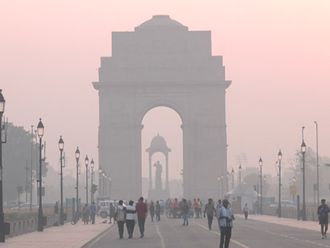In a display of political and diplomatic hypocrisy, most western leaders praised the late Israeli prime minister Ariel Sharon for his transformation from a fierce fighter for Israel to a man who took initiatives to make peace with the Palestinians.
Israeli President Shimon Peres described him as a “brave military leader”, while Swedish Foreign Minister Carl Bildt tweeted that Sharon was “a great leader of Israel. A brilliant military commander, but also a wise statesman seeing the necessity of peace”. As Sharon had been marketed long ago as a military “hero”, most western newspapers couldn’t avoid reminding readers of his responsibility for the massacre of Sabra and Shatila following Israel’s invasion of Lebanon in 1982. And the Israeli newspaper, Jerusalem Post, said on January 12 that “his escapades earned him simultaneous adulation and criticism, most notably from prime minister David Ben-Gurion”.
“Escapades” is a very polite euphemism for describing Sharon’s record as a military man because he, like many Israelis, had one definition of victory: “The number of their victims.” That’s why Sharon was always associated with massacres and mass killings. In 1948, he started his career through a gruesome massacre in the town of Lydda (Al Lid) that took the lives of 426 Palestinians who were caught up in a mosque. And in 1953, he was a major heading the special unit “101” and carried out another massacre in the village of Qibya in the West Bank, which claimed the lives of 170 Palestinian civilians. It wasn’t a mistake but a strict implementation of a military order encapsulated in document No. 207/56/644 of the Israeli army archive: “Implement the demolition and inflict blows paramount in lives in order to push the villagers to flee their homes”.
Sharon was accused of extensively torturing and killing Egyptian PoWs in the Six-Day war in 1967. And in the Arab-Israeli war of October 1973, he was glorified for crossing the Egyptian lines. But that was not a sign of military prowess. American spy planes spotted the gap between the second and third Egyptian armies and passed the information on to the Israelis. When Sharon crossed the Egyptian lines, and built a bridge between both banks of the Suez Canal, the Egyptian army ordered a special forces unit called “Unit 39” commanded by Brigadier Ebrahim Al Rifai to engage with Sharon’s troops and destroy the bridge. The Egyptians did just that and faced with the ferocity of the fighting with Egyptian soldiers, Sharon wrapped his head with gauze, claimed to be injured and left the battlefield in a helicopter. This act prompted the Israeli commander of the southern front at that time, General Shmuel Gonen (1930-1991), to demand a military trial for Sharon for retreating from the battlefield. But Gonen was blamed for the failure of the Israeli army in facing the Egyptian attack. He was dismissed on October 10 and the story of the escape of Sharon was buried.
Sharon didn’t prove any military superiority aside from his psychopathic mentality. With his forces armed to the teeth, he was just keen on counting the numbers of his victims. That’s exactly what he showed in the invasion of Lebanon in 1982, which he orchestrated as the defence minister. When his troops reached the outskirts of Beirut, the late Palestinian commander Sa’ad Sayel lured the Israelis to a perfect trap by pushing a few old T-34 Russian tanks in front of many Israeli battalions. Israelis destroyed the Palestinian tanks with ease but when the rest retreated, the Israeli tanks pursued them. When they reached the open land of Khalda south of Beirut, the Israelis realised that they had been trapped as tens of Palestinian fighters emerged from nowhere carrying RPG launchers and heavy machine guns. In few minutes, Israeli tanks were destroyed and dozens of Israeli soldiers were dead. Sharon’s response was simple: he bombed west Beirut (25 sq km) with 180,000 shells and missiles from land, sea and air in just one day.
Regardless of the thousands of civilian casualties of that invasion, Sharon couldn’t give up his favourite game. He instigated the massacre of Sabra and Shatila refugee camps, using his proxy Lebanese Phalangist Christian militia. It was the same tale with the invasion of Jenin in 2002; Sharon culminated the invasion by organising a massacre in Jenin refugee camp that left 500 civilians dead.
With this record, Sharon did not witness any profound changes in his vision. He remained the model of a psychopath, just like his voters, who were ready to elect him again as the Jerusalem Post pointed out in its editorial on January 12 titled: “Sharon’s legacy”. This legacy, which the paper calls to build on with another unilateral withdrawal from the West Bank, embodies the history of Israel through the life of Sharon. The paper, like the rest of Israelis, is not in favour of justice but is looking for an alibi. As it explained: “The reasoning behind a unilateral pullout is eminently simple. To maintain a strong Jewish majority and prevent the creation of a binational state between the Mediterranean and the Jordan River, Israel must relinquish control over the West Bank, at the very least in places where there are large concentrations of Palestinian populations.” It’s obvious: Sharon died, but his legacy is still alive.
— Mohammad Fadhel is a Bahraini Media consultant at BHUTH (Dubai).









